Phantasia: Twisting The Mind’s Eye
Abstract Art in Motion
no words, no stories, no depictions, no representation
Selected shorts approx. 80 min, in cooperation with Punto y Raya.
Friday, 9 October 2020 – 18:00 @ Belvedere 21 / Blickle Kino
“Hair blooms in a nasal forest. Microscopic particles orbit massive stars. Firing rivers decay into cities. Error is the tool. Mindless doodles worship the vacuum, as liberated metonymies go haywire. Reality’s debris pokes the senses, devoid of context or scale. Obsession short-circuits the brain in pulsating patterns; brushstrokes chase the invisible, and closed systems build up expectations that never resolve as anticipated, if at all.” (Noel Palazzo)
This programme -curated by the founders of Punto y Raya Festival- features abstract works approaching diverse manifestations of the absurd. It will offer new insights into the notions of causality, apophenia, obsession, and of course, meaning. It concludes with some examples produced in the partner countries behind Punto y Raya: Spain, Poland, and Austria.
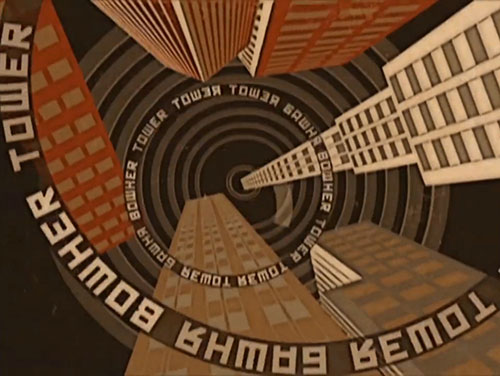
Tower Bawher Remix
Theodore Ushev | 2017 | 3 min 31 sec | colour | drawing | CA
The original film is a constructivist-style abstract animation set to the musical composition Time, Forward! by Georgy Sviridov.
The film’s title is an allusion to Tatlin’s Tower, an unbuilt structure conceived by Vladimir Tatlin as a tribute to the glory of the proletariat. Drawing on the tower’s design, the film seems to build toward a utopian goal, until the grandiose, futuristic forms abruptly tumble. In Tower Bawher, Ushev celebrates constructivist art while also critiquing the use of art in the service of ideology. The film contains visual references to such Soviet era artists as Dziga Vertov, the Stenberg brothers, Alexander Rodchenko, El Lissitzky and Lyubov Popova.
The film was awarded internationally on multiple occasions, including Best non-Narrative Film at I Castelli Animati festival, and Best Abstract Film at the London International Animation Festival.
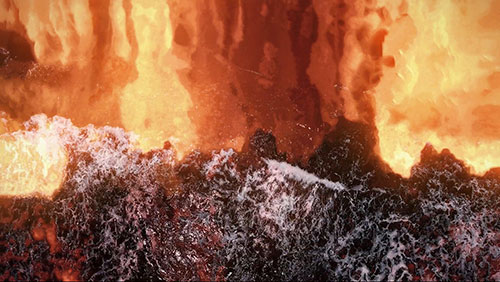
Surface Value
Morgan Beringer | 2019 | 4 min 38 sec | colour | cgi | video-comp. | UK
Starting to explore the structural and expressive possibilities of using EbSynth to apply movement to still images, resulting in something of a very ‘clean’ data mosh. The video technically contains only 25 still images. The original stills being ‘arrived at’ in full clarity before each cut for the first half, while the second half begins with a still in full clarify before dissolving into the movement source.
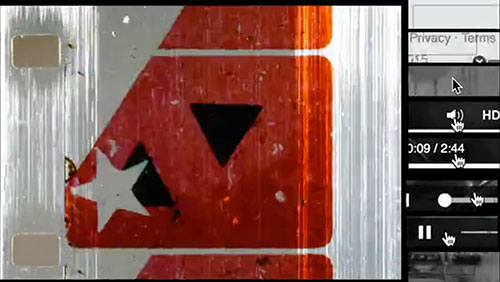
East meets West
Dirk de Bruyn | 2015 | 4 min 30 sec | color | video-comp. | cameraless | drawing | CA
East Meets West is an abstract flickering animation that sits precariously between the digital and the analog. The film highlights the luminous scratches, dust and Letraset materially present and placed on the original film, all to the layered beat of Viola Smith’s drumming.
Produced through a residency at LIFT (Liaison of Independent Filmmakers of Toronto, Canada) East Meets West also alludes to the different aesthetics emanating out of 60s North American East and West Coast Experimental Films.
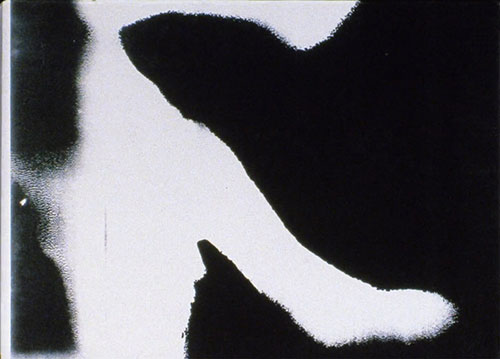
Errata
Alexander Stewart | 2005 | 5 min | color | video-comp. | US
An experimental film that uses a photocopier to generate frames of animation. Each frame of the film is a photocopy of the previous frame. Both black & white and color photocopies were used to make this film, approximately 4,600 copies total.
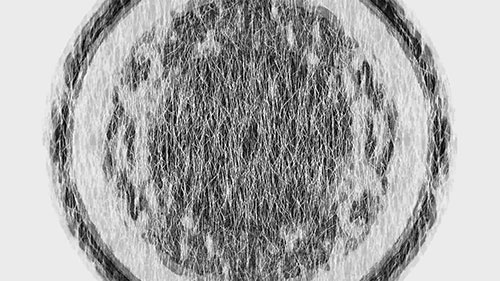
_soundscape_
Jordan Wong | 2018 | 2 min 9 sec | colour | cgi | cameraless | US
A playful abstract animation based on a pre-existing soundscape full of rhythmical nonsense. The imagery was fully derived from After Effects.
The original soundtrack was designed by Jungmin Cha.
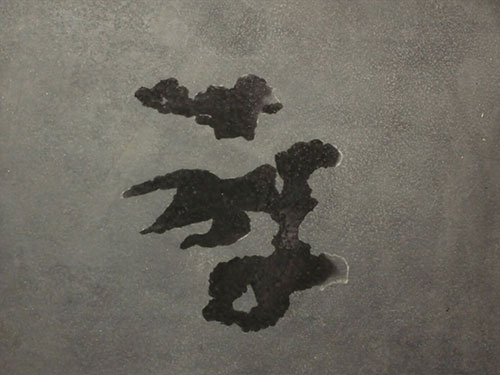
Refreshment
Johan Rijpma | 2014 | 2 min 57 sec | colour | video-comp. | stop·motion | NL
Water is spilled on a stone pavement leaving a small stain. As time passes the stain dries up, shrinks and changes shape. Just before the water is completely evaporated the process is put on hold. The new shape of the stain is then being enlarged and recreated with new water.
This process repeats and with these interventions the ‘life’ of the stain is artificially refreshed and extended to an unnatural length. Which allows new shapes to evolve that otherwise could never have existed.
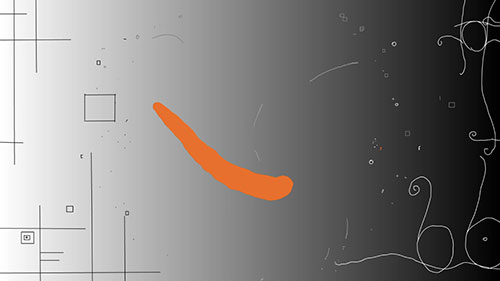
Divide
Matt Abbiss | 2011 | 1 min 33 sec| colour | drawing | EG
Divide is a short, hand drawn, abstract animation. The visuals were completed first by Matt Abbiss in Flash CS5, then handed onto musician Jakob Schmid, who was free to interpret the mood, themes and rhythms in any way that he saw fit.
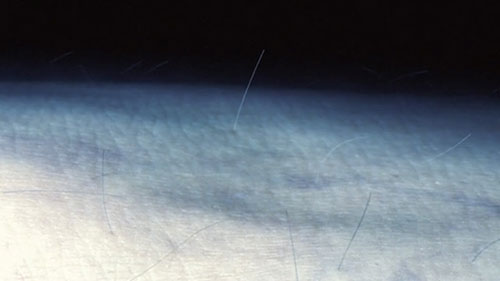
Drift
Max Hattler | 2008 | 3 min 34 sec | color | video-comp. | drawing | UK
Drift considers the body as landscape through close-up images of skin. The music likewise takes a close-up view of a series of harp chords and viola harmonics. Using real photography in extreme close-up creates a foreign yet familiar world, removed from reality, yet sometimes almost too close. In the music, this tension is mirrored. Original samples are exploded into a multitude of tiny elements before being reconstructed into a tight arrangement based on the Fibonacci series. (Specialten)
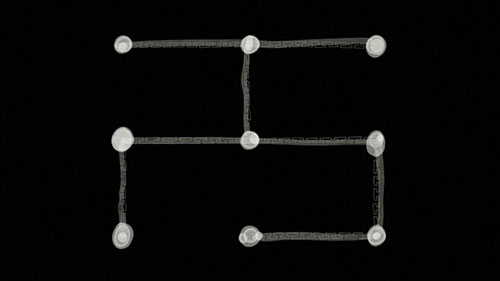
This
Malcolm Sutherland | 2016 | 5 min 42 sec | b&w | drawing | CA
A meditative visualization of Tibetan Buddhist Monks chanting.
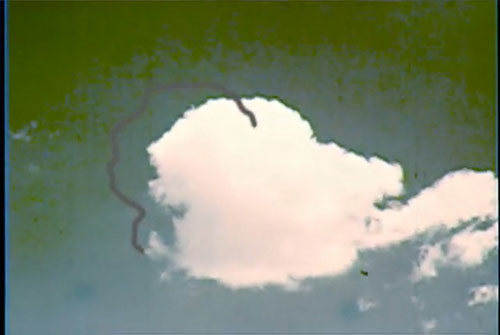
How to Draw Clouds
Salise Hughes | 2006 | 2 min 20sec | colour | video-comp. | drawing | US
A meditation on the desire to hold on to the ephemeral.
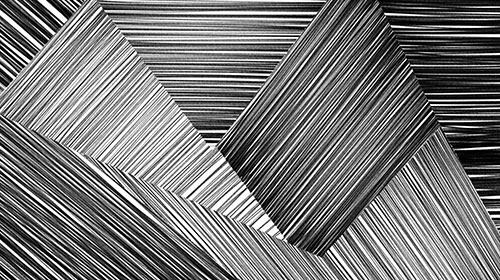
Halved feat. Chip King (the body)
Toshikazu Tamura | 2016 | 2 min 25 sec | b&w | drawing | JP
An powerful hand-drawn animation the deconstructs space to the clashing sound of VMO. Directed by Toshikazu Tamura, this VMO’s track is from the album Catastrophic Anonymous. Animation by TOOLATE, in an Onionskin production.
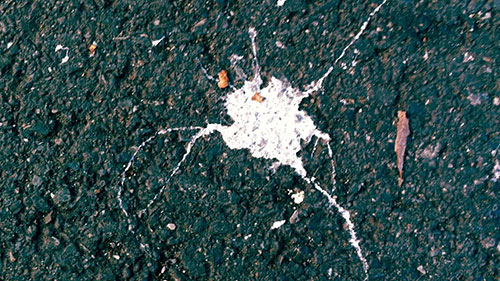
Bird Shit
Caleb Wood | 2013 | 40 sec | color | video-comp. | stop·motion | US
A closer look at the behaviors of birds, through animated cell phone photos of bird shit.
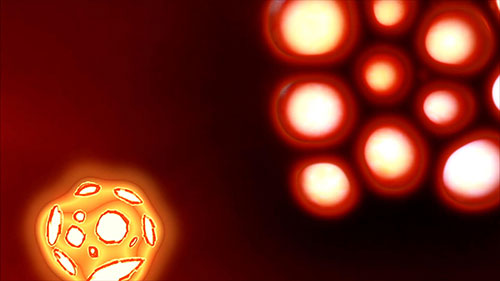
So Far, So Close
Paul Rabe | 2013 | 5 min 9 sec | colour | video-comp. | stop·motion | drawing | US
So Far, So Close is an attempt to create a visual piece that felt both astronomical and microscopic. While you are watching, imagine yourself to be an observer, not necessarily looking for a beginning and an end, but simply looking through a telescope (or a microscope!) on a distant world yet to be discovered.
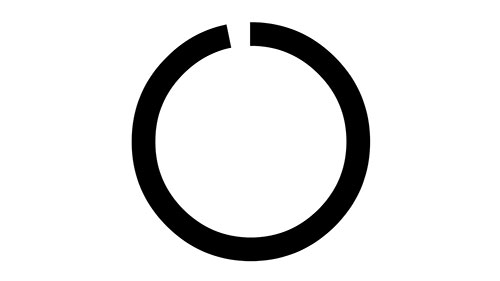
Waiting
Jasmin Edelbrunner | 2015 | 2 min 3 sec | b&w | cgi | AT
Preloaders usually make time pass easier until a video is fully loaded. What happens if waiting becomes the main plot? Imagine the situation, when you have to wait for something you don’t know. This short film allows you to feel the passage of time in complete silence. Watch the circle struggling with time while you ask yourself “What I am waiting for?”
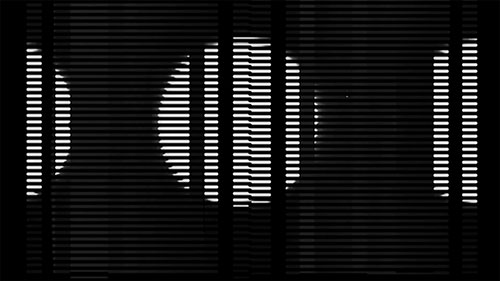
Flüssige Wesenszüge einer Bildapparatur
Vera Sebert | 2018 | 7 min 22 sec | b&w | cgi | video-comp. | AT
On the screen’s digital surface, abstract machine code appears as sensual images, readable by humans. Visualised machine instructions make up their own semantics and are the base for human instructions. On a cinema screen, these images are detached from their initial meaning. They condense on the picture base and swash into our eyes. Like a random rhizome structure, an associative montage of minimalistic user interfaces follows the film’s timeline. Our own body perception and our interpretation formed by media conditions become protagonists in a film without narrative.
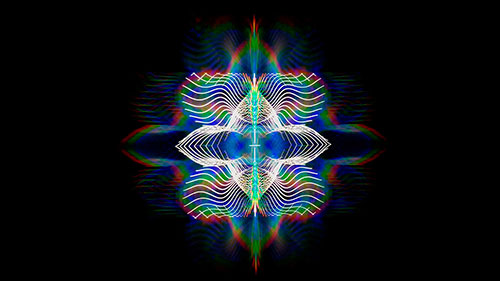
Until we coleidescape
Reinhold Bidner | 2017 | 4 min 6 sec | color | cgi | cameraless | AT
On the screen’s digital surface, abstract machine code appears as sensual images, readable by humans. Visualised machine instructions make up their own semantics and are the base for human instructions. On a cinema screen, these images are detached from their initial meaning. They condense on the picture base and swash into our eyes. Like a random rhizome structure, an associative montage of minimalistic user interfaces follows the film’s timeline. Our own body perception and our interpretation formed by media conditions become protagonists in a film without narrative.
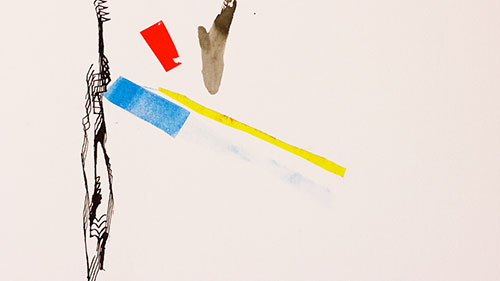
Animation Quartet #1
A Home in Progress Film | 2015 | 2 min | color | drawing | ES
Animation quartet #1 is a collaboration between AHomeInProgressFilm and Víctor Sastre, halfway between musical notation and exquisite corpse.
4 musicians, 4 graphic tools and 4 instruments to develop an audiovisual improvisation based on a pre-existent score.
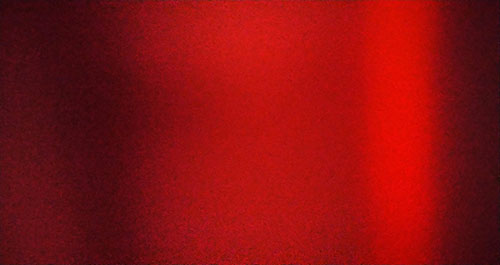
Azala ez da azala
Begoña Vicario | 2019 | 1 min 50 sec | stop·motion | drawing | ES
Surface is not a surface.
The soundtrack generates volumes as it creates the visual Surface.
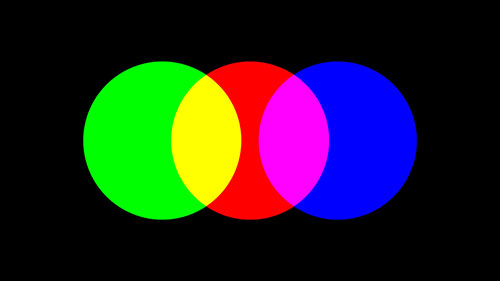
RGB Colour Model
Blanca Rego Constela | 2016 | 5 min | color | cgi | video-comp. | ES
First Prize PyR Fest 2016
WARNING: This film contains flashing images!
Digital animation based on the additive synthesis RGB (red-green-blue) colour model—the primary colours of light. The shapes move and overlap in a constant flicker that generates complementary colours and entoptic phenomena, assaulting the eyeballs and assassinating the normative consciousness of the viewer.
A piece that does not happen only on the screen, but in our neurons.
The soundtrack is the film frames themselves saved as audio files, using a data bending process inspired by the optical sound experiments by filmmakers such as Norman McLaren, Lis Rhodes, Guy Sherwin, etc. What you see is exactly the same that what you hear.
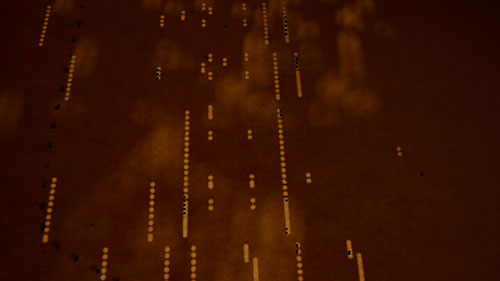
p.e.r.f.o.r.m.a.n.c.e
Karolina Głusiec | 2011 | 2 min 20 sec | color | cgi | video-comp. | UK
The Pianola is a self-playing piano, containing a pneumatic or electro-pneumatic mechanism that operates the piano action via pre-programmed music perforated paper, or – in rare instances – metallic rolls.
The piano keys are pressed although there is no performer. The melody that we can hear comes from within the instrument, which is actually playing the music record. This music record is a roll of paper with holes in it.
A starting point for my project was a visit to the Musical Museum in Brentford, Middlesex. I was looking for a specific archive directly related to music, when I came across a room full of automated instruments.
P.E.R.F.O.R.M.A.N.C.E is a closer look into an archival object, the dust, the surface, the trace. Looking at something that is invisible: something that can be really seen in a source of data, an archive and the visual representation of music at the same time.
In this film, all of the images were generated through stop-motion animation using the music records.
None of the images were created digitally.
The soundtrack was created digitally and was intended to respond to the images, that were generated purely by animation of the music record.
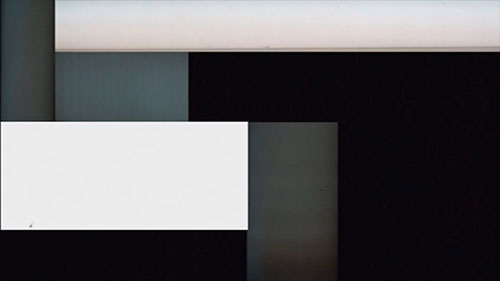
Obok siebie
Anna Beata Barańska, Michał Barański | 2012 | 2 min 32 sec | color | video-comp. | PL
A simple picture. Components: a fluorescent lamp, pieces: 1.
Multiplication of object and sounds. Fluorescent lamps compose the image; in subsequent stages of the film, they are reproduced exponentially. Aside from the typical mathematical associations, the geometric progression is also associated with the human impact on the environment and the technology which it creates (eg. systems 32 or 64 bit, etc.).
Technological progress, of which we are eye-witnesses, is growing very rapidly. This may raise the question: are we able to keep up with every novelty? The image gradually becomes more and more chaotic, the lights flash faster and faster, and from the initial order pictures begin to emerge, giving us anxiety.
Similar feelings may cause (and certainly, should cause) scientific progress and human pressure on the surrounding area, especially on the environment.
The only sound is a glow tube/fluorescent lamp warming up.
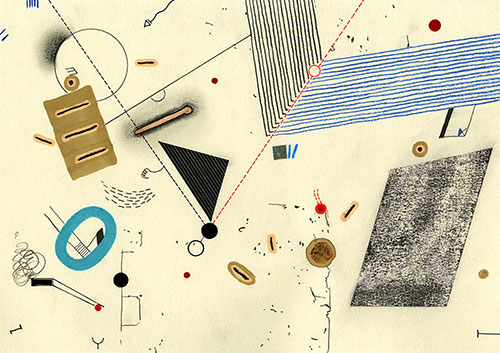
25/25
Aga Jarząb, Maciek Bączyk | 2018 | 4 min 20 sec | color | cgi | drawing | PL
The title of the film refers to, on the one hand, the tradition of numbering subsequent graphic prints, and on the other, the fact that the movie sequence was drawn on “25 frames per second”. Each subsequent drawing looks similar to the previous one, like copies of the same pattern; in fact, they are only different in the details. Their meaning is conveyed only through motion.
Each drawing consists of a huge number of micro-actions that can be viewed infinite times, searching for the new sound and image interaction. So, a looped sequence that lasts only 1 second, can extend to an unlimited length, depending on the viewer’s perception.
The soundtrack is a combination of field recording (mainly, our private home audio-sphere) and electronic sounds produced with a Synthi AKS synthesizer.


